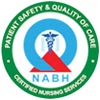
The Role Of Radiotracers In Nuclear Medicine
December 13, 2023
Radiotracers play a pivotal role in advancing medical imaging techniques, notably in positron emission tomography (PET), single-photon emission computed tomography (SPECT), and gamma cameras. These radioactive substances, when introduced into the body, enable the creation of highly detailed images of internal structures and processes, revolutionizing diagnostic capabilities and treatment strategies for various medical conditions.The Composition And Function Of Radiotracers
Radiotracers typically consist of a radioactive isotope coupled with a biologically active molecule or compound selectively taken up by specific cells or tissues. For instance, the radiotracer FDG (fluorodeoxyglucose) combines a fluorine isotope with a glucose molecule. The choice of molecule ensures targeted uptake by cells or tissues with a high demand for the associated compound, facilitating precise imaging.Journey Through The Body
Once introduced into the body, radiotracers travel through the bloodstream and are selectively absorbed by cells or tissues with an affinity for the attached molecule. For example, FDG is absorbed by cells actively utilizing glucose, such as cancer cells. The emitted positrons or gamma rays from the radioactive isotope can then be detected by specialized imaging equipment, generating comprehensive images of the radiotracer's distribution within the body.PET Imaging
PET stands out as a widely adopted medical imaging technique reliant on radiotracers. By employing substances like FDG, PET enables the creation of detailed images depicting metabolic activity within the body. This technology proves particularly valuable in the diagnosis and monitoring of cancer, where heightened metabolic rates in cancer cells can be visualized. PET's ability to identify areas of increased metabolic activity aids in early cancer detection and ongoing treatment assessment.SPECT Imaging
SPECT, another crucial medical imaging technique utilizing radiotracers, relies on gamma-emitting substances to create detailed images of the radiotracer's distribution within the body. SPECT finds its niche in diagnosing and monitoring cardiovascular diseases, tracking the uptake of radiotracers by the heart muscle. This capability allows for the identification of areas with compromised blood flow or abnormal cardiac function.Conclusion
In conclusion, radiotracers have transformed the landscape of medical imaging, offering unparalleled insights into the inner workings of the human body. With applications in PET, SPECT, and other imaging modalities, these agents have become indispensable in diagnosing and monitoring conditions ranging from cancer to cardiovascular diseases. As technology continues to advance, the role of radiotracers in nuclear medicine is poised to evolve, further enhancing our ability to provide precise and effective medical care.Recent Blogs
- Factors Contributing to Infertility
- Advantages of Robotic Surgery
- What is Robotic Surgery? Conditions Where Robotic Surgery Can Be Used
- Robotic Surgical Systems
- Types of Robotic Surgeries
- Causes of Male and Female Infertility
- What Is Male Infertility? Treatments For Male Infertility
- Superfoods That Can Boost Your Chances of IVF Success
- 5 Myths Over IVF
- What Are The Do’s And Don’ts For The Embryo Transfer Process?
- What are the different Cardiology Subspecialties?
- What is the difference between Invasive, Non Invasive and Interventional Cardiology?
- What is the difference between Cardiologist and Cardiothoracic Surgeon?
- What Are the Different Types of Heart Surgery and Their Purposes?
- Types of nuclear cardiology tests
2023
- December (6)
- November (8)
- Cardiac Catheterization: When Is It Required?
- Types Of Pediatric Cardiology Test
- Tips For Preventing Heart Problems In Kids
- Advances In The Diagnosis Of Congenital Heart Disease In Children
- Signs Of Heart Problems In Children
- What Is A Pediatric Cardiologist?
- Understanding Congenital Heart Defects In Children
- Pediatric Cardiac Surgery: Types And Considerations
- September (7)
- Lifestyle Changes To Prevent Diabetes
- New Innovative Advances In Diabetes Treatment
- The Link Between Obesity And Diabetes
- Monitoring Blood Sugar At Home
- The Importance Of Regular Diabetes Check-ups
- Understanding Diabetes: Types, Causes, Symptoms & Treatment
- Lower Blood Sugar Naturally: Managing Blood Sugar Through Diet
- August (8)
- What’s The Difference Between A Neurologist And Neurosurgeon?
- Dementia: Causes, Symptoms, Diagnosis And Treatment
- Seizures: Causes, Symptoms, Diagnosis And Treatment
- Epilepsy: Causes, Symptoms, Diagnosis And Treatment
- Is Autism A Neurological Disorder? Causes, Symptoms & Diagnosis
- Pediatric Neurology: Neurological Disorders In Pediatrics
- What Are The Most Common Neurological Disorders?
- Types Of Neurosurgery: Overview, Procedure & Costs
- July (11)
- Types of Cardiac Stents
- Types of nuclear cardiology tests
- What Are the Different Types of Heart Surgery and Their Purposes?
- What is the difference between Cardiologist and Cardiothoracic Surgeon?
- What is the difference between Invasive, Non Invasive and Interventional Cardiology?
- What are the different Cardiology Subspecialties?
- What Are The Do’s And Don’ts For The Embryo Transfer Process?
- 5 Myths Over IVF
- Superfoods That Can Boost Your Chances of IVF Success
- What Is Male Infertility? Treatments For Male Infertility
- Causes of Male and Female Infertility
- April (4)
- March (1)
-

Share with us
Click Here -

Organ Transplantation
Click Here
Copyrights © 2025 PSG Hospitals. All Rights Reserved.








